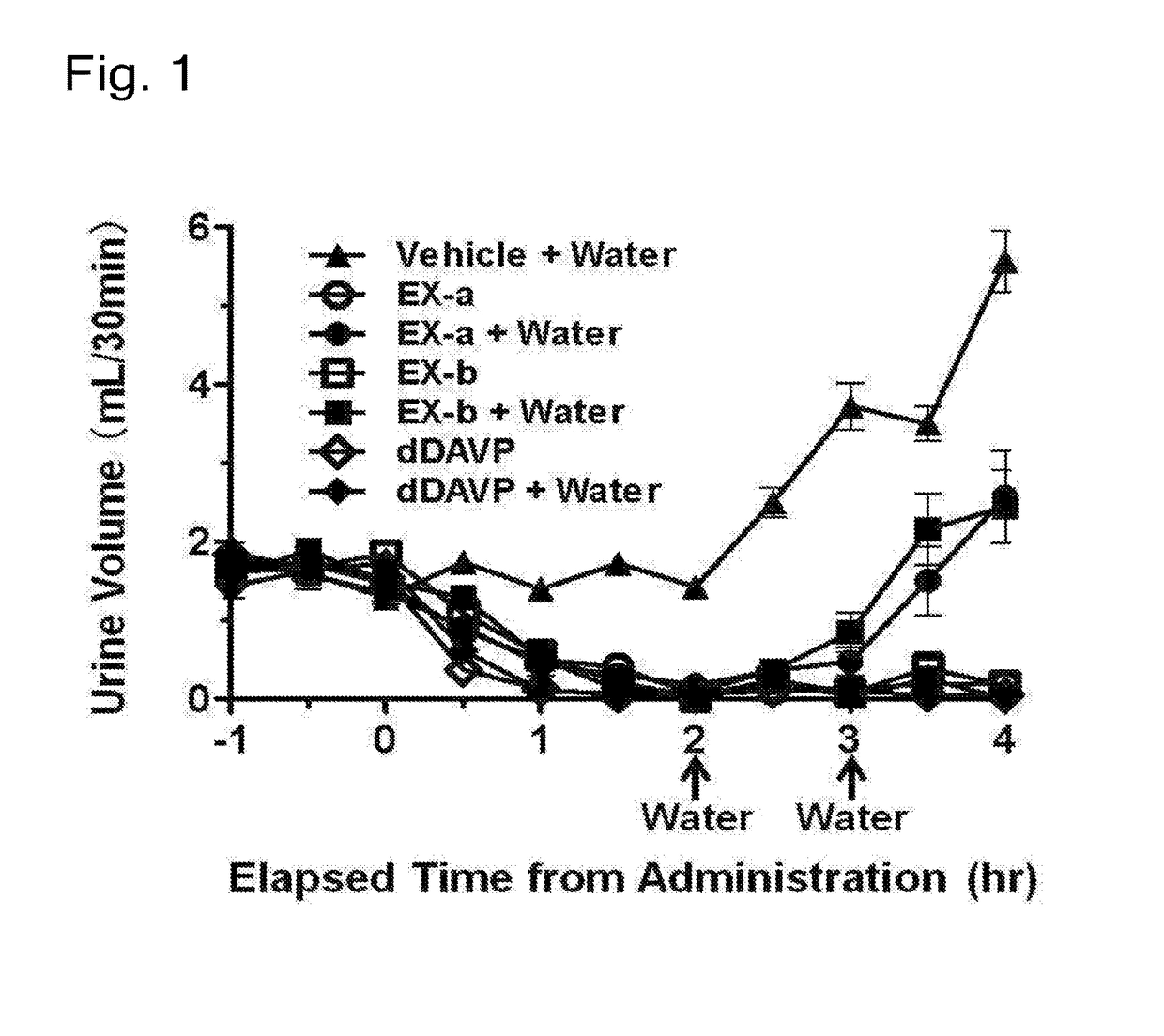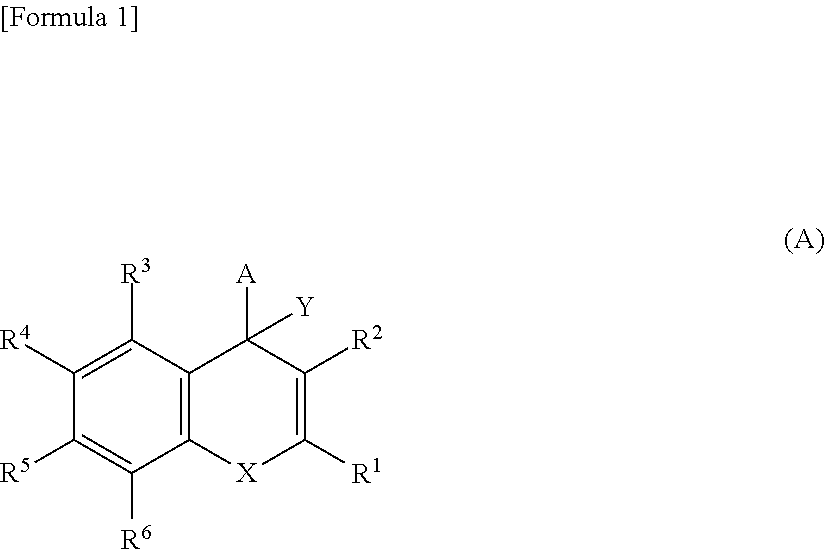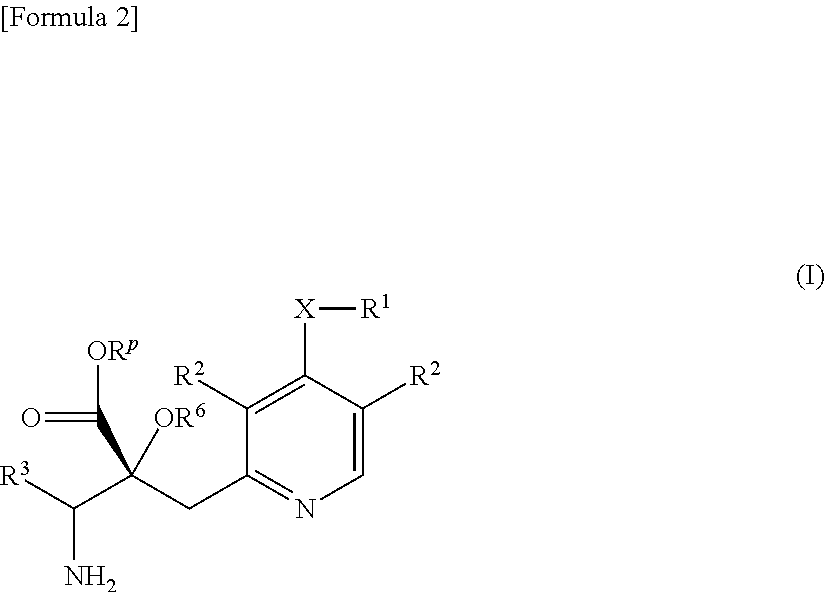Pyridine derivative
a pyridine and derivative technology, applied in the field of new drugs, can solve the problems of increasing increasing the risk of hyponatremia, and affecting the quality of life, so as to reduce the risk of fracture, increase the endogenous avp level, and reduce the avp level
- Summary
- Abstract
- Description
- Claims
- Application Information
AI Technical Summary
Benefits of technology
Problems solved by technology
Method used
Image
Examples
example 1
[0267]Under argon atmosphere, CMBP (0.353 ml) was added to a mixture of (3R,4S)-3-[(4-hydroxypyridin-2-yl)methyl]-4-isobutyl-3-(methoxymethoxy)-1-(methoxymethyl)azetidin-2-one (150 mg), 2-cyclopropylethanol (116 mg) and toluene (1.5 ml) and the mixture was stirred at 150° C. for 1 hour under microwave irradiation. The resulting reaction mixture was allowed to cool to room temperature and subsequently purified by silica gel column chromatography (hexane / AcOEt). 6 M Aqueous sodium hydroxide solution (1.5 ml) was added to a mixture of the obtained compound and MeOH (1.5 ml) and the mixture was stirred at 50° C. for 2 hours. The resulting reaction mixture was allowed to cool to room temperature and subsequently concentrated under reduced pressure. A mixture of the resulting residue and DOX (1.5 ml) was cooled with an ice-water bath, subsequently 9 M hydrochloric acid (1.5 ml) was added thereto and the mixture was stirred at 50° C. for 1 hour. The resulting reaction mixture was allowed t...
example 2
[0268]6 M Hydrochloric acid (1.1 ml) was added to a mixture of (3R,4S)-3-{[4-(2-cyclopropylethoxy)pyridin-2-yl]methyl}-4-[(3-cyclopropylpropoxy)methyl]-3-(methoxymethoxy)-1-(methoxymethyl)azetidin-2-one (121 mg) and THF (5 ml) and the mixture was stirred at 60° C. for 1 hour. The resulting reaction mixture was allowed to cool to room temperature and subsequently concentrated under reduced pressure. The resulting residue was purified by ODS column chromatography (MeCN / 0.1% aqueous formic acid solution) to give (1) (2R,3S)-3-amino-4-[(4-chlorohexyl)oxy]-2-{[4-(2-cyclopropylethoxy)pyridin-2-yl]methyl}-2-hydroxybutanoic acid (26.8 mg) and (2) (2R,3S)-3-amino-2-{[4-(2-cyclopropylethoxy)pyridin-2-yl]methyl}-2-hydroxy-4-[(4-hydroxyhexyl)oxy]butanoic acid (31.7 mg) each as a solid.
example 3
[0269]6 M Aqueous sodium hydroxide solution (1.2 ml) was added to a mixture of (3R,4S)-3-{[4-(cyclohexyloxy)pyridin-2-yl]methyl}-4-isobutyl-3-(methoxymethoxy)-1-(methoxymethyl)azetidin-2-one (85 mg) and MeOH (1.2 ml) and the mixture was stirred at 70° C. for 4.5 hours. After cooling the resulting reaction mixture with an ice-water bath, concentrated hydrochloric acid (1 ml) was added thereto. The resulting reaction mixture was stirred at room temperature for 13 hours and subsequently at 50° C. for 1.5 hours. The resulting reaction mixture was concentrated under reduced pressure, and the residue was purified by ODS column chromatography (MeCN / 0.1% aqueous formic acid solution). The obtained compound was dissolved in a mixture of MeCN and an excess amount of 1 M hydrochloric acid, the solvent was distilled off under reduced pressure to give (2R,3S)-3-amino-2-{[4-(cyclohexyloxy)pyridin-2-yl]methyl}-2-hydroxy-5-methylhexanoic acid dihydrochloride (54.6 mg) as a solid.
PUM
 Login to View More
Login to View More Abstract
Description
Claims
Application Information
 Login to View More
Login to View More - R&D
- Intellectual Property
- Life Sciences
- Materials
- Tech Scout
- Unparalleled Data Quality
- Higher Quality Content
- 60% Fewer Hallucinations
Browse by: Latest US Patents, China's latest patents, Technical Efficacy Thesaurus, Application Domain, Technology Topic, Popular Technical Reports.
© 2025 PatSnap. All rights reserved.Legal|Privacy policy|Modern Slavery Act Transparency Statement|Sitemap|About US| Contact US: help@patsnap.com



